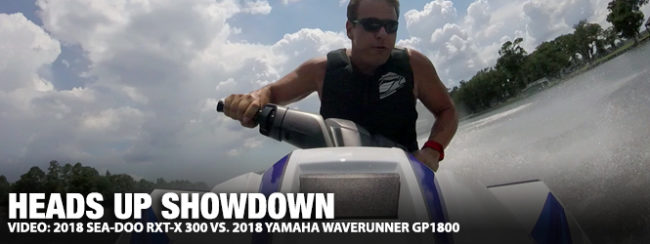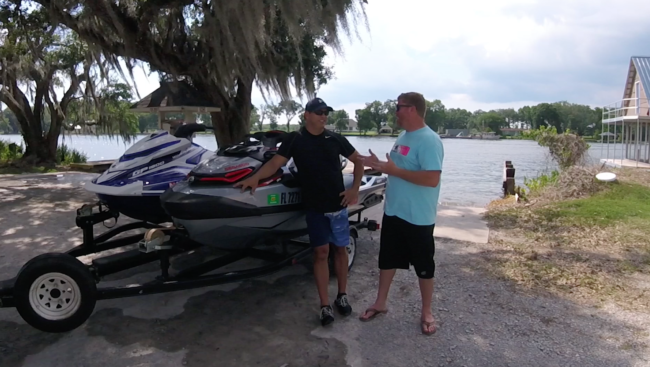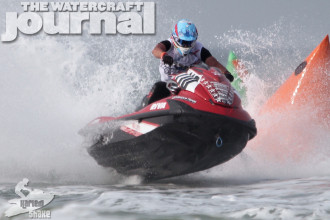
It’s been a standing policy since launching in 2013 that The Watercraft Journal doesn’t do shootouts. Certainly, the logistics of performing a shootout between two or more watercraft is all but impossible (that is, if you’re going to do it right); and moreover the outcome is almost always controversial. Somebody isn’t going to be happy no matter what you do. And more often than not, it’s the manufacturers who are the least pleased. This is often because those performing the comparison do not make the extra effort to ensure that the comparison is equal. Not in outcome of course, but equal in regards to a level playing field. So in wanting to keep the OE’s happy and the more vociferous of our readers at bay, we’ve simply never have done them.
That’s not to say that the demand hasn’t gone away. In fact, as we continue to produce more videos the outcry for shootouts has only grown. Thus far, we’ve resisted the urge. That is, until recently, when a Florida-based professional sasquatch hunter (no, we are not making this up) attempted a drag race between a 2018 Yamaha GP1800 WaveRunner ($13,999) and a 2018 Sea-Doo RXT-X 300 ($15,699). The video is an unmitigated failure when it comes to properly staging a comparison – enough to spur both ourselves and Greenhulk.net’s own Jerry Gaddis into devising the single-most foolproof, authentic, unbiased and equal comparison between these two machines.

By sheer good fortune, The Watercraft Journal has two of these machines in our possession for long-term testing. Already, the GP1800 has a healthy 28.9 hours on the clock, while the Sea-Doo just tipped 33 hours. When plenty of time post the factory break-in and nearly equal riding time on their respective engines, we felt we had a good basis to start from. The plan was simple: as handling can be subjective, and drag races carry too many factors (rider weight, reaction time, etc.), both Jerry and we felt that a single-rider acceleration test would be best. Using Jerry’s Vbox Sport – one of the most trusted performance accelerometers available today – we would measure each ski individually from an idle speed of 5 mph (because a true zero is impossible) to 60 mph. The Vbox would also record a sustained top speed (not peak).
Initially, both Jerry and we were concerned that the scales would literally tip in the Yamaha’s favor given its power-to-weight ratio. That is, until we did the math. The GP1800 comes in at 769 lbs. (dry weight) and an unconfirmed 265-horsepower. Since we didn’t want anyone questioning whether we had equal fuel levels, we decided to thoroughly top off each ski to its respective limit. That means that with a 18.5 gallon tank, and a gallon of gas weighing 8.6 lbs., the GP1800 would weigh 928 lbs. with a full tank of fuel. As the new RXT-X 300 came in at a hefty 828 lbs. dry weight, but a leaner 15.9 gallon tank, that gave the Sea-Doo a total weight of 967 lbs. with a full tank of fuel – equating a difference of 39 lbs. between the two.

Since Jerry was going to be our only pilot this day, he trusted that he wasn’t lying about his 6’1″ 235 lbs. stature. We traveled to Morgan City, LA from The Watercraft Journal HQ and met Jerry at Greenhulk’s secluded testing spot, a thin sliver of bayou lined with dangling Spanish moss and cypress trees sitting no more than a few feet above sea level. The day was a scorcher, 91 degrees, so air temperatures weren’t what you’d call nominal. Wind was slight, about 5 mph from the south, which wouldn’t affect our east-to-west running test canal. Jerry journeyed a ways off to warm up each ski before making his first pass. Each ski made 4-to-5 passes, careful not to heat sink the engines. We didn’t want to come back and do this over again.
And before setting out, we made sure of two major items specific to the Sea-Doo: First, the RXT-X would be ran in “Sport” mode. Although all iTC-equipped Sea-Doo begin in “Touring” mode, which allows for a rider to reach the craft’s particular top speed, the fuel/ignition curve is somewhat more gradual than when toggled over to “Sport.” Next, we opted to not use the craft’s all-new “Launch Control” feature, which employs the Sea-Doo’s VTS to ensure a controlled and smooth acceleration pass, reaching plane far quicker than a conventional launch. Why? Because the Yamaha doesn’t have Launch Control, and we wanted to compare “apples to apples,” so to speak.
Jerry also stated, “I launched with trim all the way down and trimmed up as the ski planed off just as any experienced rider would do. I did not launch in neutral trim.”

The image shown above is taken from the “Long Haul” video attached at the bottom of this article, and is a true and authentic replication of the best passes for each unit. For the Yamaha GP1800, the WaveRunner reached it’s 30mph mark in 1.68 seconds, and its 60mph mark in 4.42 seconds, with a sustained top speed of 69.3 mph. That is incredibly fast, but surprisingly, not fast enough to beat the Sea-Doo.Within 1.47 seconds, the RXT-X had inched ahead by .02 of a second; and was even closer to the Yamaha’s 60mph at 4.36 seconds – besting the GP by a tenth of a second. Yes, the RXT-X’s top speed was an impressive 70.6 mph, but in regards to one-on-one acceleration testing, the difference between the two was fractions of a second.
Admittedly, both Jerry and we were pretty certain that the Yamaha was going to win this competition, so the upset was felt by all. In fact, Jerry was concerned that our GP1800 might not had been running right, so the next day procured an identical ’18 GP1800, and performed a preliminary test to see if we needed to return and retest the two. The outcome of Jerry’s secondary test was identical to ours this day. The Sea-Doo pulled ahead – albeit slightly – every time. We cannot think of a more equally-grounded comparison, and are pleased that we went to these lengths to “show our work,” as our old math teachers would say. Hopefully you are too. Now let the comment wars begin!















